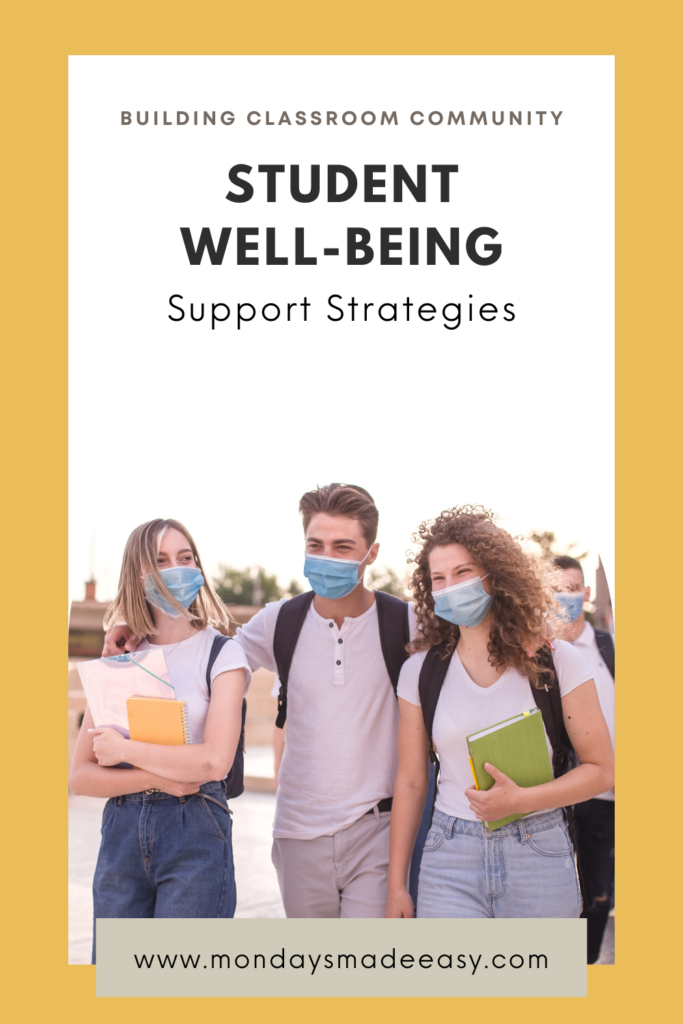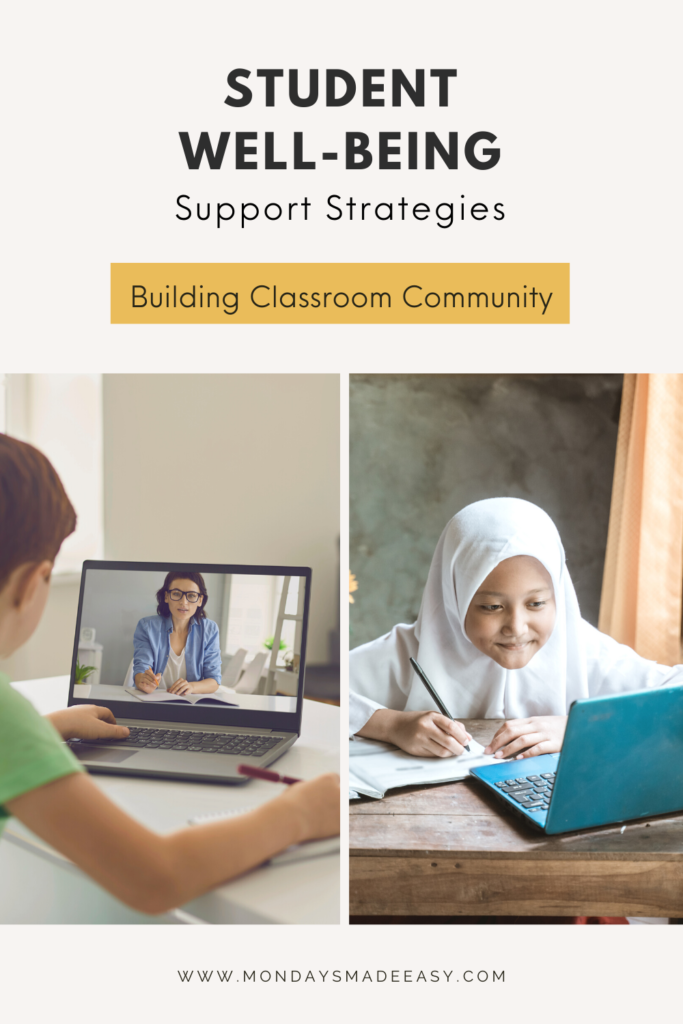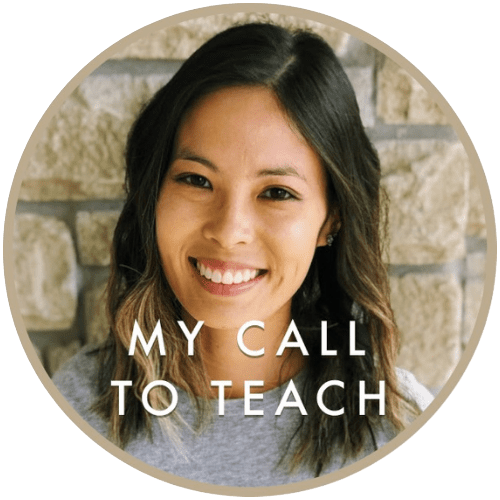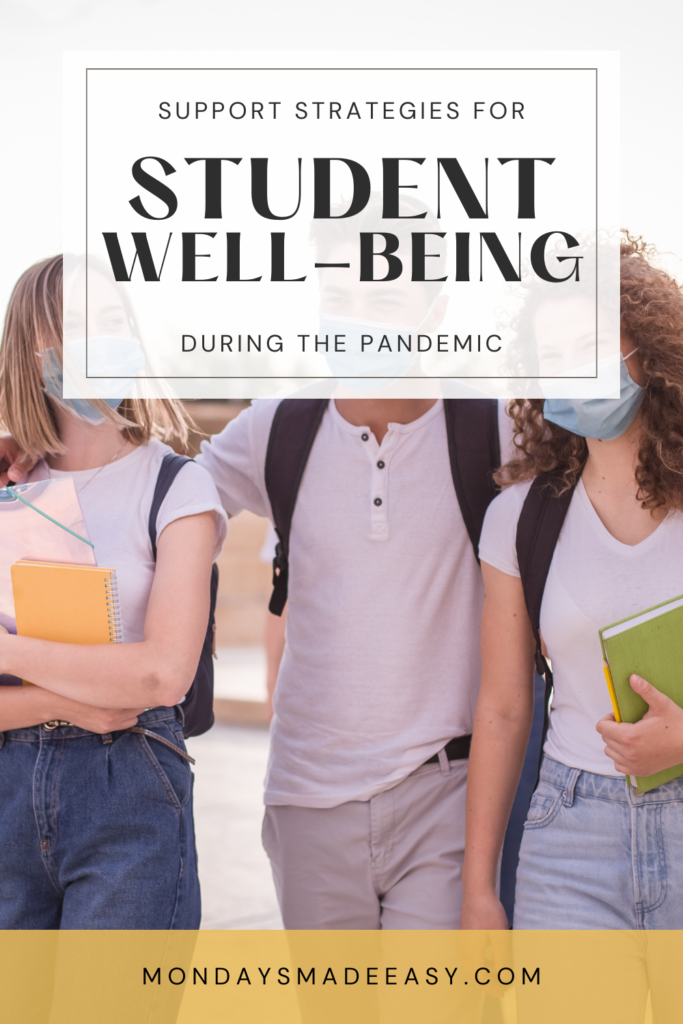Social-Emotional Learning is an essential component of any curriculum. Since the onset of the coronavirus pandemic, teachers have noticed that SEL opportunities are not only more important than ever, but also more challenging: virtual learning and online classrooms have created barriers for connecting with our students at a time when they need that connection most.
The fact that our students are struggling is not news, but the following statistics may help to put these struggles into perspective: a recent student survey conducted by the Toronto District School Board reports that “about half of students were concerned about getting used to school routines again. About one-third of students were concerned about getting used to in-person interactions with teachers and peers, not being able to interact with friends like they used to (35%), and coping with their fears or anxiety.”

Thankfully, several students have also reported that a relaxing classroom culture and support with social-emotional learning skills would make them feel more at ease. In light of this, I’ve reached out to a few specialists in our community to support your SEL curriculum in 2021:
1. Encourage the Expression and Release of Anxiety

Instagram: @NamasteinSchools
TeachersPayTeachers Store: NamasteinSchool1
When dealing with children of all ages, my friend Danielle of Namaste in School reminds us that “unprecedented times can yield unprecedented behaviour.” To approach this with empathy and sensitivity, she recommends that we “validate worries while we encourage students to express the physical impact of anxiety on their body and mind.” In order to encourage expression, Danielle recommends the following strategies:
- Prompt students to write in a journal and rate how they are feeling on a pictorial or number scale.
- Have students create a storyboard featuring different outcomes that may arise from a concerning situation.
- Invite students to project their worry onto something tangible, like a piece of fruit or a stress ball, so that they can talk through their frustrations.
- Inspire students to utilize artistic mediums, such as paint, clay, or even marshmallows, to recreate their worry as something that will make them laugh.
While facilitating these activities, Danielle suggests that educators remind their students about the function of anxiety: “it is crucial to understand that anxiety is a natural defense mechanism that can help us adapt and grow.” She suggests that we “prompt them to thank the feeling for protecting them” before releasing their anxiety through the following ways:
- Physical removal: have students crunch up the apple they expressed their thoughts to, squish the stress ball or clay, or scrunch up a journal page on which they expressed their worry.
- Meditation: guide students through a visualization meditation of their worry floating away on a cloud or being carried away by a river. You can also guide them through conflict resolution and the practice of gratitude through the use of Danielle’s 28 Mindful Meditation Scripts.
2. Establish a Routine with Social-Emotional Check-Ins
Instagram: @InsidetheGiftedClassroom
TeachersPayTeachers Store: Inside the Gifted Classroom
Rachel of Inside the Gifted Classroom recognizes the challenge of consistently meeting students’ emotional needs on a regular basis: “Even though we know that frequently checking in with student’s emotions is important, it’s still hard to carve out time in our busy days to do it.” I often find it hard to prioritize SEL after striving to meet deadlines for standardized testing and aiming to achieve academic goals; that’s why I love the Daily SEL Check-In, which promotes social-emotional learning as a daily habit.

The Daily SEL Check-In is an intuitive Google Form that interacts with students based on their individual needs: “the form automatically takes students to a section based on how they are feeling. It provides a statement that validates their emotion, and gives them the opportunity to explain why they are feeling the way that they are.” This tool can benefit students in virtual settings and in-person classrooms alike: students are often reluctant to be vulnerable in front of their peers, and with distance learning, it is nearly impossible to reach students one-on-one. This form offers a safe space for students to express how they are feeling in whatever learning setting your classroom might be.

3. Utilize Social Stories about the “New Normal”

Instagram: @Miss_Third_Grade
TeachersPayTeachers Store: Miss3rdGrade
When you think about it, “The New Normal” is a bit of a paradoxical term – it’s no wonder our students are expressing high levels of uncertainty and unease. To resolve this, Maryam of Miss_Third_Grade has shared a social story called “The New ‘Normal,‘” which includes comprehension questions that practice inferencing, predicting, citing text evidence, understanding characters, and making text-to-self connections.
To illustrate the new norms of our society, “The New ‘Normal‘” shares about a 4th-grade student named Joey: “Joey is dealing with the daily obstacles of school life during a pandemic. Between masks, partitions, and social distancing, Joey is struggling with the challenges of adjusting to the new ‘normal.'” After reading about Joey’s experience, students are prompted to make text-to-self connections and apply a wide range of literacy skills to this social story.
4. Promote Mindfulness and Self-Care
Instagram: @theelementofteaching
TeachersPayTeachers Store: The Element of Teaching
The concept of self-care is an important lesson for our maturing students as they begin to take on more responsibility and autonomy. To foster this, Mariel of The Element of Teaching incorporates self-care and compassion into classroom dialogue: “I encourage them to check on themselves, and if they are doing okay, to check on someone else.” She also facilitates activities that address the importance of communicating about personal well-being and taking time to rest.

Throughout the quadmester, Mariel builds mindfulness into her lessons with one-on-one check-ins, meditation, and interactive games like Self-Care Tic-Tac-Toe, which fosters noncompetitive engagement between students as they work towards completing three acts of self-care within a week. This resource includes pre-made game cards, along with editable templates that inspire students to brainstorm their own acts of self-care. Also included is a reflective prompt to offer opportunities for assessment. This resource is also digital, allowing you to utilize it as a virtual social-emotional learning activity and inspire self-care to students who are learning from home.

5. Model Wellness and Self-Reflection

Instagram: @TheyCallMeMrsKelly
Etsy Shop: TheyCallMeMrsKelly
One of the best ways to teach mindfulness and self-care is to practice it, become passionate about it, and speak to it authentically. The energy we bring into the classroom lays the foundation for our interactions with our students; they pick up on it, and they notice and take after the respect we pay to ourselves. Carol of “TheyCallMeMrsKelly” shares a reflective self-care ritual that offers solace on our challenging days and guides us through a practice of intuitive self-compassion:
“I try to write for at least 10 minutes a day because writing is a form of meditation for me. It is a form of reflection of self that helps me to identify problems or obstacles that I may struggle with.” Carol shares that this practice helps to shift her mindset towards problem-solving: “While writing, ask yourself: What do I need to do in order to get what I need? This is what I do when I write in my journal: I am writing out my problems, or whatever comes to me, and I try to figure out how to solve that problem.” Self-reliance and self-care are empowering practices. If justifying time to care for yourself seems unattainable, give Carol’s thoughts a read – as an educator, a mother, and a wife, her perception will inspire you.
6. Affirmations for Self-Esteem
Instagram: @MyCalltoTeach
TeachersPayTeachers Store: My Call to Teach
Margaret of My Call to Teach recognizes the privilege of being both a teacher and authority figure in the lives of youth: “As a teacher, I have the privilege to be around children – and I have a huge privilege to be in a position of influence for them.” To make the most of this, Margaret builds affirmative self-talk into her daily routine with her middle school students: “I believe setting the stage right in the morning is such an important way to start the day. I want my students to feel worthy and valuable – to feel that they deserve to be loved, to be given opportunities, and to succeed in life.”

Margaret demonstrates the importance of self-love by prioritizing it at the beginning of each day: “Before we do anything, say anything, learn anything, I ask them one question: ‘What are you going to do today?’ They respond, ‘Love myself.’ It’s a simple but powerful way to acknowledge self-worth.” To see this affirmative exercise in action, check out Margaret’s reel on Instagram. I was drawn to Margaret’s practices because I thought they would fit brilliantly into a secondary education setting, where affirmations are not as commonplace. As the focus shifts away from classroom culture and towards individual academic subjects, try instilling self-love affirmations using Margaret’s free “Love Yourself” Affirmative Posters.

7. Foster Classroom Culture and Promote Resilience

Instagram: @muchadoaboutteaching
I wanted to end on an important note about addressing the stigma of mental health for kids, something that my friend Mary-Anne of MuchAdoAboutTeaching has done a brilliant job of during distance learning: “Some of the concerns that my students have revealed to me include poor sleeping habits, lack of support from loved ones, complete disengagement, difficulty focusing, extreme loneliness, impending doom, pandemic-induced anxiety, and more. These are all very difficult to navigate from behind a screen, so I have worked really hard to bring mental health discussions, exercises, and stories into my classroom to encourage students to speak about their struggles, while realizing that mental health should not be taboo.“
Mary-Anne recognizes that students need to feel that their concerns are being heard and validated: “It is extremely important for me to create an environment in which my students know that they are cared for.” This is why she teaches the concept of grit by showing Angela Lee Duckworth’s Ted Talk: “Grit: The Power of Passion and Perseverance” and working through the following social-emotional learning lesson for high school students: “After watching the Ted Talk, I have students get two pieces of paper out. On the first, I ask them to write something that they are self-conscious about (and I remind them that no one else will see this note). Once finished, I have them crumple the paper and then throw it away. I then ask them to write a positive note of encouragement to themselves. I tell them to place this note in their locker, on their planner, or on their device as a gentle reminder that they are worthy.” Mary-Anne’s goal is to foster resilience and work to change students’ inner dialogue.
As we pass the one-year mark of the COVID-19 pandemic, I would like to take a moment to commend you for your outstanding service in education. If you’ve made it this far into this article, please know that your efforts to support your students are recognized, respected, and admired. Your work as an educator is truly irreplaceable.
For more information on student well-being, take a look at my article on A Case for Education in Schools or follow along on Instagram for up-to-date research and information.
[…] and ideas related to supporting your students during the COVID-19 pandemic, check out this blog post on Student Well-Being Strategies featuring diverse perspectives from a range of educators in our online […]